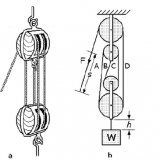STEPPER MOTOR – 21130
A stepper motor is an electric motor that turns in small increments rather than continuously. Stepper motors are used extensively in robots.
Stepper versus conventional
When electric current is applied to a conventional motor, the shaft turns continuously at high speed.With a stepper motor, the shaft turns a little and then stops. The step angle, or extent of each turn, varies depending on the particular motor. It can range from less than 1° of arc to a quarter of a circle (90°).
Conventional motors run constantly as long as electric current is applied to the coils. A stepper motor turns through its step angle and then stops, even if the current is maintained. In fact, when a stepper motor is stopped with a current going through its coils, the shaft resists turning.A stepper motor has brakes built in. This is a great advantage in robotics; it keeps a robot arm from moving out of place if it is bumped accidentally.
Conventional motors run at hundreds or even thousands of revolutions per minute (rpm). A typical speed is 3600 rpm, or 60 revolutions per second (rps). A stepper motor, however, usually runs less than 180 rpm, or 3 rps. Often the speed is much slower than that. There is no lower limit; a robot arm might be programmed to move just 1° per day, if a speed that slow is necessary.
In a conventional motor, the torque, or turning force, increases as the motor runs faster.With a stepper motor, however, the torque decreases as the motor runs faster. Because of this, a stepper motor has the most turning power when it is running at slow speed. In general, stepper motors are less powerful than conventional motors.
Two-phase and four-phase
The most common stepper motors are of two types: two-phase and four-phase. A two-phase stepper motor has two coils, called phases, controlled by four wires. A four-phase stepper motor has four phases and eight wires. The motors are stepped by applying current sequentially to the phases. The illustration shows schematic diagrams of two-phase and fourphase stepper motors.
When a pulsed current is supplied to a stepper motor,with the current rotating through the phases, the motor rotates in steps, one step for each pulse. In this way, a precise speed can be maintained. Because of the braking effect, this speed is constant for a wide range of mechanical turning resistances. Most stepper motors can work with pulse rates up to about 200 per second.
Control
Stepper motors can be controlled using microcomputers. Several stepper motors, all under the control of a single microcomputer, are typical in robot arms of all geometries. Stepper motors are especially well suited for point-to-point motion. Complicated, intricate tasks can be done by robot arms using stepper motors controlled by software. The task can be changed by changing the software. This can be as simple as launching a new program with a spoken or keyed-in command.



